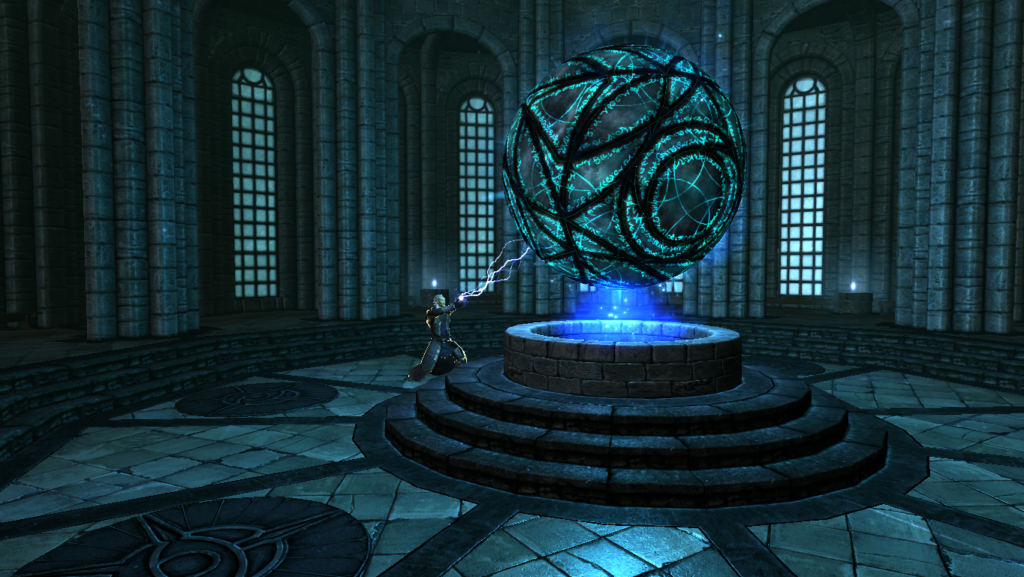#Pratchat71 – It Belongs in a University
Liz and Ben are blessed by two returning guests, the Rev Dr Avril Hannah-Jones and Dr Charlotte Pezaro, as they go on one last visit to Roundworld – this time as clerics, wizards and librarians clash over who should take ownership. It’s Terry Pratchett’s fourth and final collaboration with Ian Stewart and Jack Cohen, 2013’s The Science of Discworld IV: Judgement Day.
Ponder Stibbons has just activated Unseen University’s latest “Great Big Thing”, the culmination of six years’ research (and spending) into the frontiers of magical knowledge. It summons a side effect: improbably-named librarian Marjorie Daw, from the even less probable universe in a bottle, Roundworld. Marjorie decides to stick around when she discovers her entire universe is under threat: the Church of the Latter-Day Omnians, who believe the Disc is round, think Roundworld should be theirs. After surviving elves and Auditors, will it be lawyers and priests who decide Roundworld’s fate?
This time in the (really short!) fiction chapters, the wizards barely visit Roundworld at all; Ridcully spends most of his time talking to Marjorie, before the last few chapters detail the trial – sorry, hearing – of the century. In the non-fiction chapters, Jack and Ian do talk about science…but mostly about religion. Their big idea this time revolves around Gregory Benford’s ideas of human- and universe-centred thinking. As the fiction pits priests against wizards, you can probably see where this is going. We certainly could, and we’ll be blunt: we didn’t like it.
Is this really a book about science? How do the authors’ ideas of “religion” gel with yours – or even Pratchett’s previous books and writing on the subject? What did you think of Marjorie Daw? Do you want us to do a special episode with Avril about Scott Morrison’s book? And were we too harsh on this book? Join in the conversation using the hashtag #Pratchat71 on social media.
Podcast: Play in new window | Download (Duration: 2:14:44 — 62.2MB)
Guest Rev Dr Avril Hannh-Jones (she/her) is a Minister in the Uniting Church. While she should be known for her tireless activism for marginalised communities, most people know her for the Church of the Latter Day Geek: an occasional service where science fiction and fantasy stories serve as parables, and cosplay is allowed in the pews. Avril previously appeared on Pratchat back in 2019 to discuss Small Gods in #Pratchat16. Avril posts weekly Reflections on her blog, Rev Doc Geek, tweets as @DocAvvers, and would love to see you at a Sunday service at North Balwyn Uniting Church.
Guest Dr Charlotte Pezaro (she/her) is an educator with a PhD in pedagogy and years of experience communicating science and technology, and shaping how it is taught in Australian schools. She last joined us in 2021 for #Pratchat41 to discuss Nation, which is both Charlotte’s and Pratchett’s favourite Pratchett book. You can find out more about Charlotte at charlottepezaro.com, or her education work at dialogic.com.au.
As usual, you can find notes and errata for this episode on our website.
Next episode it’s time for another short story: this time a young adult one Pratchett wrote for Diana Wynn Jones in 1989, “Turntables of the Night”. It was originally published in the anthology Hidden Turnings, but you’ll most easily find it in Pratchett’s short fiction collection A Blink of the Screen. We’ll be discussing this tale of record collectors and DJs with superstar DJ and comedian, Andrew McClelland! Have a read and send us your questions using the hashtag #Pratchat72, or via email to chat@pratchatpodcast.com.
Want to help us get to the end of our six(ish) year mission and read every Pratchett book – and more? You can support us with a tip, or a subscription for as little as $2 a month, and that’s cuttin’ our own throats! See our Support Us page for details.

